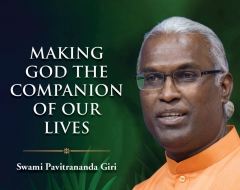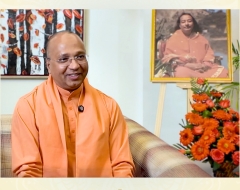Excerpts from “How to Be Happy at Will,” a talk given by Paramahansa Yogananda. The full talk can be found in Man’s Eternal Quest, the first volume of Paramahansaji’s Collected Talks and Essays, published by YSS.
As you watch the faces of human beings, you can usually classify their expressions into four basic types, with corresponding mental states: smiling faces, bespeaking inner and outer happiness; grim faces, denoting sadness; dull, unsmiling faces, revealing inner boredom; and calm faces, reflecting an inner peace.
A desire satisfied produces pleasure. A longing unfulfilled creates sadness. Between the mental crests of happiness and sadness are troughs of boredom. When the high waves of pleasure and pain and the depressions of boredom become neutralized, the state of peace manifests.
Beyond the state of peace there is an ever-new state of bliss, which the individual can find within himself and recognize as the true native state of his soul. This bliss is buried beneath the exciting mental waves of exuberant pleasure and deep depression and the hollows of indifference. When these waves disappear from the mental waters, the placid state of peace is felt. Reflected in the calm waters of peace is the ever-new bliss.




